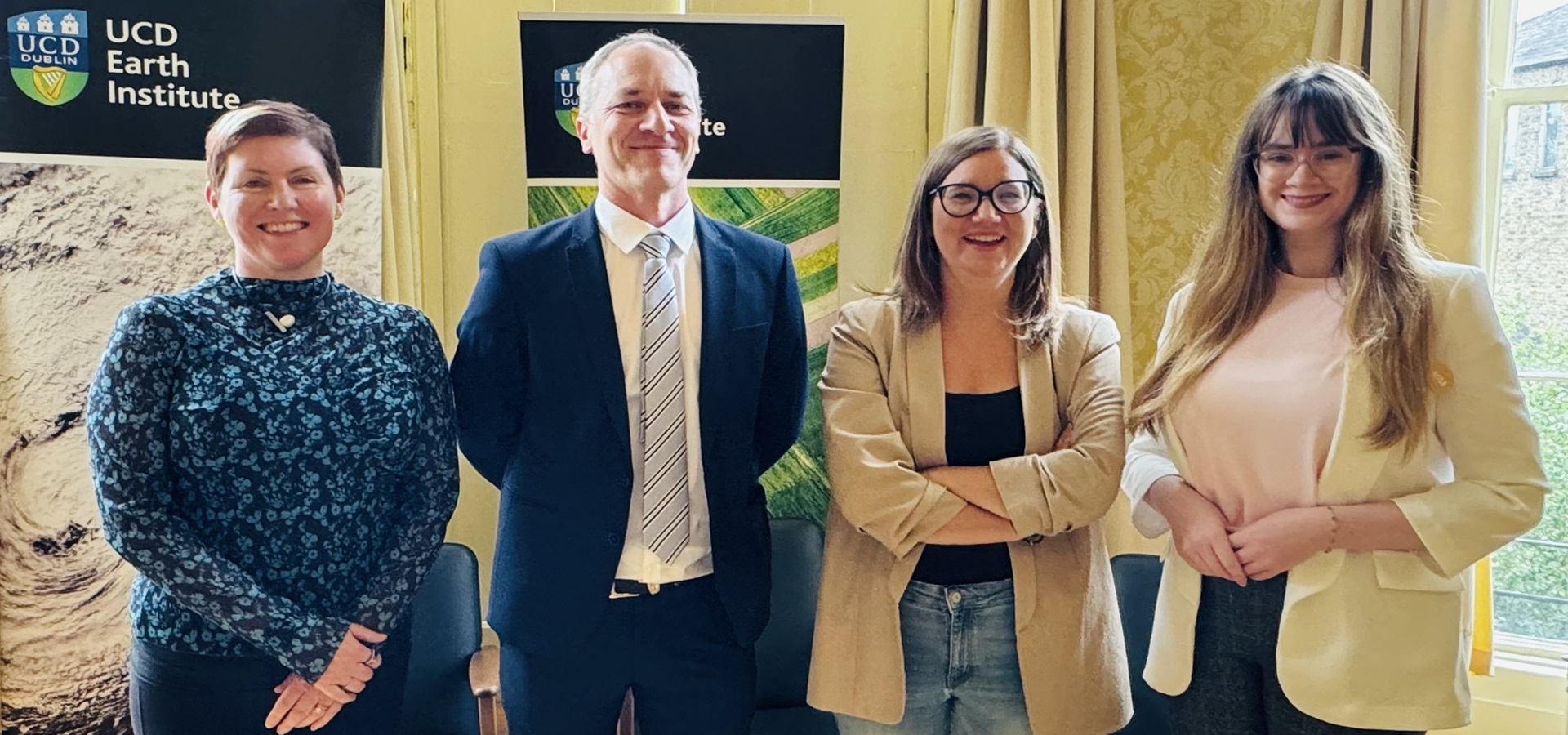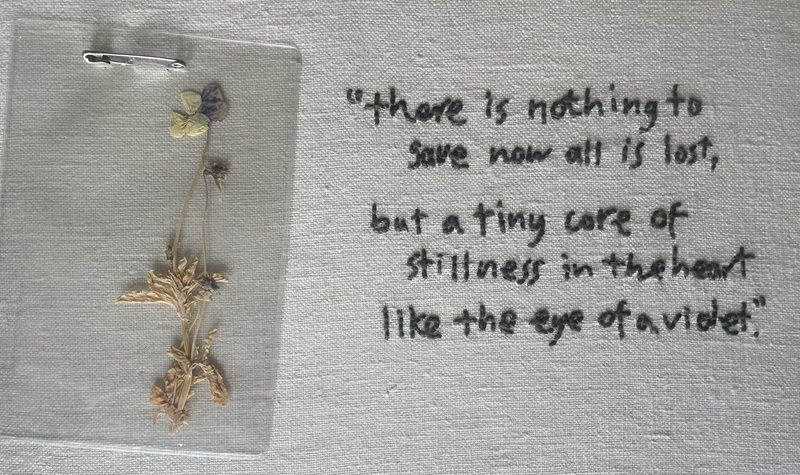Katherine Burns from the UCD School of Agriculture and Food Science tells us why solitary bees are the working single mothers of the pollinator world and explains what we can do to support them.
When we think of bees, the image that usually comes to mind is a golden striped bee who makes honey and lives in a hexagonal hive with her queen and sisters. However, while honeybees are very popular in the media, they only represent one of over 20,000 species of bee worldwide. Believe it or not, about 90% of bee species do not make honey or live in a colony with workers like social honeybees or bumblebees do. Most bees prefer an independent lifestyle, which has appropriately earned them the title of “solitary bees”.

Photo credit: Katherine Burns
Ireland is home to 77 species of solitary bee, representing nearly 80% of the country’s bee species. However, despite their majority, in our research on the public perceptions of pollinators in Ireland we found that only 35% of the public could identify a picture of a solitary bee. Since media attention concerning pollinators tends to focus on large-bodied, charismatic insects, such as honeybees and butterflies, this is not a surprising result. Based on our results, we suggest a more inclusive approach to pollinator conservation, including campaigns to boost the public image of underrepresented and underappreciated insects. So, let’s get to know the solitary bee!
Solitary bees are incredibly diverse, coming in a broad range of sizes, shapes, and colors. Solitary bees also live in a variety of different nesting types, including holes in the ground, hollow twigs, or stone walls – there is even a species that lives in abandoned snail shells! However, despite their differing tastes in attire and architecture, there is one thing that connects most of these solitary bee species: their diets. Like their social cousins, solitary bees feed mainly on the pollen and nectar of flowering plants and, consequently, are excellent pollinators of many plant species. In fact, evidence shows that solitary bees can actually be better pollinators than honeybees for several important crops, such as squash, apples, and coffee!

Photo credit: Katherine Burns
Not only are solitary bees excellent pollinators, they are also the single working mothers of the pollinator world. Female solitary bees build their nests and collect food for their babies all by themselves, without any workers to help them! In the spring, mated females will find a suitable nesting site and begin collecting food (pollen and nectar) for her future children. Once she has collected enough food and laid all of her eggs, she will seal off the nest and her life will end soon after. The larvae (baby bees!) will continue to develop over the autumn and winter, feeding on the food their mother collected for them, before emerging as adults the following spring to begin the cycle again!
Unlike honeybees and bumblebees, who can fly several kilometers, most solitary bees have a flight range of about 600 meters. Unfortunately, because of their limited flight range, a flowerless neighborhood may mean starvation for your solitary bee neighbors. This is why it’s so important to let wildflowers bloom on your lawn! Another way to support the single working mothers of the pollinator world is to provide them with some prime real estate. Some of the easiest ways to create solitary bee habitat are: 1) Leave or clear away some bare patches of soil on your property for mining solitary bees or 2) Leave logs and tree trunks on your property and let hollow-stemmed plants, such as bramble or reeds, grow for cavity nesting bees. These little ladies have enough on their plates, trying to raise an entire generation of bees on their own, that it’s the least we can do for them!
Essay first published 9 June 2021

Photo credit: Katherine Burns
About the author
Katherine Burns is a PhD candidate in the School of Agriculture & Food Science at University College Dublin, supervised by Dr Dara Stanley. Her research explores the contributions and conservation of insect pollinators in Ireland, funded by the Eva Crane Trust and the Irish Research Council, in collaboration with the Environmental Protection Agency. Katherine is also an award-winning science communicator and has participated in a wide variety of scientific outreach events and competitions. You can learn more about her research and public engagement on her website, www.thejoyfulecologist.com.
About the series
The A-Z of Environmental, Climate and Sustainability Research is a new series of short essays by UCD postdoctoral and postgraduate researchers, technical and research support staff, about their work. The series is developed and curated by the Earth Institute Associate Member Committee and Earth Institute staff. If you'd like to submit a piece for the series do get in touch!
Find out more about the Anthropocene with Nick Scroxton, Bees with Katherine Burns, Cannabis with Caroline Dowling, Degrowth with Ciarán O'Brien, Education with Georgina Fagan, Finance with Shane McGuinness, Gaia with Federico Cerrone, Hydrometry with Kate de Smeth, Innovation with Hannah Gould, Justice with Lauren Minion, Kelp with Priya Pollard, Landscape part 1 with Tomas Buitendijk, Landscape part 2 with Amy Strecker and Amanda Byer, Reusing microbial ‘bathwater’ for sustainable drug production with Laura Murphy, Mammals with Virginia Morera-Pujol, and Nitrogen with Ernest Osei-Asante in our latest essays.
Further reading
How-to-guide for creating wild pollinator nesting habitat
Contributions of solitary bees to crop pollination
Garratt MPD, Breeze TD, Boreux V, Fountain MT, McKerchar M, et al. (2016) Apple Pollination: Demand Depends on Variety and Supply Depends on Pollinator Identity. PLOS ONE 11(5): e0153889.
Klein AM, Steffan-Dewenter I, Tscharntke T. (2003) Fruit set of highland coffee increases with the diversity of pollinating bees. Proc Biol Sci 270(1518): 955-61.
Tepedino, V.J. (1981). The pollination efficiency of the squash bee (Peponapis pruinosa) and the honey bee (Apis mellifera) on summer squash (Cucurbita pepo). Journal of the Kansas Entomological Society, 54, 359.

